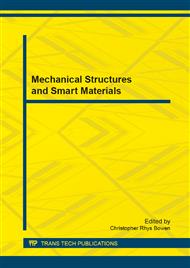p.177
p.181
p.185
p.189
p.195
p.199
p.204
p.210
p.214
Main Effects Study on Plasma Etched Aluminium Metallization
Abstract:
Main effects contributing to the quality of surface roughness on an etched aluminium metallization wafer using Reactive Ion Etching (RIE) was studied. A total of three controllable process variables, with eight sets of experiments were scrutinized using an orderly designed design of experiment (DOE). The three variables in the investigation are composed of CF4 gas, composed of O2 gas and RF power while time is constant. The estimate of effect calculated for composition of CF4 gas, composition of O2 gas and RF power are-2.205, -0.975, and-0.525 respectively. All factors gave negative effects. This implies that the surface roughness increases when the content of CF4, O2, and RF power is lower. The results suggest that the composition of CF4 gaseous as the most influential factor as its main effects plot has the steepest slope followed by oxygen and RF power.
Info:
Periodical:
Pages:
195-198
Citation:
Online since:
January 2014
Authors:
Price:
Сopyright:
© 2014 Trans Tech Publications Ltd. All Rights Reserved
Share:
Citation:


